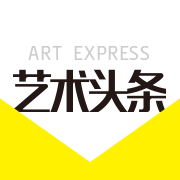
牛安的画^_^The Painting of Ann Niu
2012-05-09 15:10:57 郑重
画家都有着由蛹蜕变为蝴蝶的过程。人们乐意看到的是蝴蝶,而不是蛹。因为蛹是原始的,还谈不上美。殊不知,人的天资和才情,往往是从原始之中泄露出一番春信。我正以如此的心情来看牛安的绘画艺术。
中国书法是哺育牛安艺术之蛹的温床。她幼时习字,一点一划,表现出浓厚的兴趣,对运笔的起落提按有着颇好的领悟。书画界前辈谢稚柳、唐云认为她的笔性还好,骨子里不俗。无意插柳,随其自然。她以优异的成绩考进美术学校,但后来她移情于油画,与书法疏远了。虽然如此,中国书法的艺术精神仍然浸入骨髓,成为她绘画艺术的魂魄。
中国书法是抽象而又单纯的艺术。就是那么一根线,有着通天地而惊鬼神的艺术效果,书家运用那根线来表现起精,气,神,牛安也是运用中国草书的开合收纵之势来状物抒情。但在新的时间和环境里,她进行了一番革新自我,已经不再是传统意义上的书法理念。她把中国书法的线由沉稳变为激越,由含蓄内敛变为张扬外露,把法度有序变为无法无序,智慧地为我所用,随心所欲,笔到披靡。
这种如行云流水波动的线条和那华丽而不俗艳,缤纷而不杂芜的色彩相和谐,好像在画布上铺开了一张网,要悄悄地把这张网一层层地掀开,才会发现当代人们为寻找和确定自我存在及生命价值,所属的思索,向往,欣悦,苦恼,彷徨,焦虑的心态和情绪,都随着画家的起伏的线条和闪烁的色彩而颤动着。画家们所表现的不是纯艺术的、自我欣赏的精英化的世界,而是公共性、开启性有着芸芸众生的世俗化的世界。
由于画家有着这样的追求,所以她的绘画艺术有着鲜明的叙事性。画家运用直线,曲线,椭圆或圆形等各种线条形式,构成人体及各种各样的符号,如数字,汉字,人们日常生活中所用的器物以及其他各类抽象符号,如此种种,都打破了一般画家对概念或理想的象征性的表述,而是向我们讲述着一个个故事。画家所叙述的是她个人的,他人的,抑或是群体的故事,不是单一的,而是多元的。如果能解读一个“密码”,或许能看出整幅画的故事。正因为如此,画面才充满张力,无止境地向外延伸,也就有着进行式的不稳定之感。画家能在关键之处,用浓重而泼辣的线条使画面形成了一个稳定的结构。
画家笔下的每根线条都不同,并赋以个性化。但并不是每根线条都是成功的,也不是每根线条都是画面不可缺少的。要以少许许胜多许许,就要求画家有铤而走险的气度,在险要之处着力,留下几根出人意料的惊世骇俗的线条或几块色彩,使自己的画升华到一个新的艺术境界。
Every painter undergoes a metamorphosis from chrysalis into butterfly. What people derive so much pleasure from looking at is the butterfly, and not the chrysalis. Because the chrysalis is something primitive, it can't be called beautiful. What they don't realize is that a person's talent and powers of imagination invariably emerge from the midst of the primitive, like a breath of spring. It is with this perspective that I come to look at the paintings of Ann Niu.
Chinese calligraphy is the hothouse that has nurtured the chrysalis of Ann Niu's painting. As a girl, she practiced calligraphy, and with each dot and stroke she displayed her intense interest, and the modulated rise and fall of her brushwork revealed an excellent grasp of the art. Chinese calligraphy and painting experts from the previous generation, Xie Zhiliu and Tang Yun, consider her to have good style, and is good, and that there is nothing coarse or common about her spirit. Her talent grew effortlessly. Her outstanding score on the entrance exam earned her a place in art school, but once there she switched to oil painting, which is almost as far from Chinese calligraphy as one can get. Nonetheless, the artistic spirit of Chinese calligraphy was in her very bones, and it is the soul of her painting.
The art of Chinese calligraphy is both pure and abstract. It is the line, which has a sublime power, and a calligrapher uses the line to express jing (essence), qi (breath) and shen (spirit). Ann Niu also uses the expansiveness and gathering in, the restraint and abandon of cursive calligraphy to delineate forms and to express herself. But in this new era and new environment, she has brought forth a new kind of self, and her art is no longer calligraphic in the traditional sense. She has transformed the stillness and balance of Chinese calligraphic line into something dynamic, changing it from something implicit and restrained into something visible and open; from a highly regulated and rule-bound practice to one utterly free from convention, wielding her brush with wisdom, according her heart’s desire, so that the brush is at her mercy.
Her fluid lines, flowing like clouds and water, harmonize with her saturated but never gaudy palette of colors. It's as if there were a net spread out over the canvas, and one has to discreetly tear apart that net a layer at a time. Only then does one discover that contemporary people all dance in concert with the undulating lines and vibrant colors of this painter, whose work embodies the moods and attitudes that inform their thinking and their hopes, their pleasures and frustrations, and their ambivalence and anxiety as they seek to confirm their existences and the value of their lives. What Ann Niu expresses is not a purely artistic, self-indulgent and idealized world, but rather a shared, open, mixed-up and quotidian world.
Because of the nature of this painter's project and quest, her painterly art has evident narrativity. She uses of a variety of lines and shapes, straight lines and curves, ovals and circles, which in turn form human figures as well as a diverse array of symbols, including numerals, Chinese characters, implements we use in our daily lives, and a number of abstract symbols. This eclecticism breaks away from the conceptual or idealistic symbolic modes of expression seen in the works of most painters. Instead, Ann Niu tells us stories. The stories she narrates might be her own, or those of others, or maybe even collective stories. They aren't one-dimensional but rather multi-faceted. If you could decipher the "code," you might be able to discern the story embodied in the entire canvas. For precisely this reason, her paintings are full of tension, and they extend beyond their own edges and into infinity, which creates a feeling of forward movement and restlessness. At a critical juncture, Ann Niu applies heavy and highly kinetic lines and the painting is transformed into a stable structure.
Each line that flows from Ann Niu's brush is different from the others, and she gives each stroke a distinctly individual quality. This isn't to say that each and every stroke is accomplished, nor is the presence of each and every stroke absolutely necessary to the painting as a whole. In order to stand out from the crowd, a painter has to be fearless, so that at a risky and crucial juncture she will have the conviction to set down a few entirely unexpected and striking lines or patches of color that will raise her painting to an even higher level of accomplishment.
(责任编辑:李哲)
注:本站上发表的所有内容,均为原作者的观点,不代表雅昌艺术网的立场,也不代表雅昌艺术网的价值判断。

 李铁夫冯钢百领衔 作为群体的早期粤籍留美艺术家
李铁夫冯钢百领衔 作为群体的早期粤籍留美艺术家 吕晓:北京画院两个中心十年 跨学科带来齐白石研究新突破
吕晓:北京画院两个中心十年 跨学科带来齐白石研究新突破 翟莫梵:绘画少年的广阔天空
翟莫梵:绘画少年的广阔天空 “纤维”提问2022:存在何“缓”?
“纤维”提问2022:存在何“缓”?
全部评论 (0)